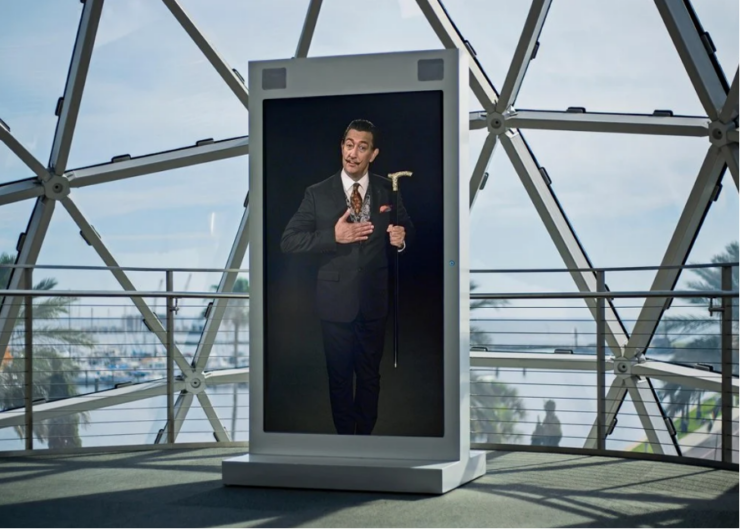Documentation
My Brother’s Mobile Phone Keeper: The Mysterious Relations of Unmysterious Things – Olga Efremov

In spring 2019 my brother lost his cancer battle. Without going deep into the emotions and consequences of the event that had become a life-altering landmark for me, I can certainly say that it put in a very skeptical light the speculations of even a remote possibility for the technology, present, past or future, to mitigate for the loss of a life that mattered to those still living. The best I can do is to sum it up with a line from a book project dedicated to my brother: “Death only hurts those who stay alive.” I believe that grieving is a highly individual process, and perhaps one of those matters which scholars should approach with utmost caution lest their criticism of specific practices comes across as insensitive and patronizing. Evelyn Wan’s seminar lecture on the practices of technologically-assisted spirituality (Utrecht University 2023) highlighted the essential human desire to be able to continue communicating with departed loved ones through either a human or a digital medium. Wan illustrated one of the recent commercial applications of the AI-assisted technology that allows figurative “summoning of the ghosts” with a case study of a virtual host at Dalí museum (Fox 13 2019), an interactive installation based on the archive footage of Salvador Dalí’s public appearances. It is easy to notice that while the digital Dalí may preserve the artist’s visual features and movement mannerism, the act itself comes across as being somewhat out of character, reducing Dalí to the role of a posthumously hired entertainer at a commercial theme park (Figure 1).
While being a welcome comic relief, the case also raised several ethical concerns related to the handling and digitalization of personal items for the people who are no longer there to give their consent. My recent interest in object-oriented ontology led me to question whether the departed persons could be treated as objects in their own right, similar to the way speculative realism treats imaginary objects such as fictional characters. The digital wizardry that brings Dalí-object to life and the speculative wizardry of J.K. Rowling’s universe can be seen, according to one of the founders of OOO theory Graham Harman (2018) as “mysterious real objects” (84). According to Harman (2016), “object-oriented realism holds that reality exists outside the mind and we cannot know it” (17). Taking inspiration from Latour’s critique of materialism, Harman argues that objects cannot be reduced to their actions and relations (19), and need to be distinguished from how they currently happen to be acting and manifesting in the world (15).

Figure 1. An interactive panel featuring a digitally generated image of Salvador Dalí.
The discussion of the ethical handling of digital properties on behalf of the diseased emphasizes the facts that unless explicitly stated in the will, the real wishes and desires of the real person who is no longer there cannot possibly be known. In the final hours of my brother’s life, I have been handed his mobile phone, still buzzing with messages. It now sits in the drawer with my cherished keepsakes, containing the archive of the last months of his life. The impossibility of knowing his intentions and wishes left me with no other choice but to let the phone’s battery discharge so it would become a “black box”, a material object of glass, wire and plastic with a digital ghost of my late brother locked inside. The carnivalesque image of Dalí as a museum host made me recall Harman’s thesis that “reality exists as a surplus even beyond the casual interactions” (17). The surplus reality of immaterial objects is nevertheless a very material matter, as I am reminded every time I hold my brother’s phone.
References
Fox 13. 2019. “Life-Sized, Virtual Dalí Now Welcomes Museum Guests.” FOX 13 Tampa Bay. May 9, 2019. https://www.fox13news.com/news/life-sized-virtual-Dalí-now-welcomes-museum-guests.
Harman, Graham. 2016. Immaterialism: Objects and Social Theory. Cambridge: Polity.
———. 2018. Object-Oriented Ontology. London: Penguin.
Utrecht University. 2023. “The Medium is a Medium — Intersecting Technology and Spirituality in a More-than-human World” – Evelyn Wan (UU).” Transmission in Motion. Accessed April 29, 2023. https://transmissioninmotion.sites.uu.nl/the-medium-is-a-medium-intersecting-technology-and-spirituality-in-a-more-than-human-world-evelyn-wan-uu.
Images:
Billock, Jennifer. 2019. “With a Little Help from A.I., the Dali Museum Brings the Famed Surrealist to Life.” Smithsonian Magazine. May 9, 2019. https://www.smithsonianmag.com/travel/with-little-help-from-ai-dali-museum-brings-famed-surrealist-to-life-180972127.
Efremov, Olga. 2023. A Cinematic Exit. Moerdyke Creative Writing [MCW] Lab. https://ic.pics.livejournal.com/moerdyke/9393129/2102560/2102560_800.jpg.

